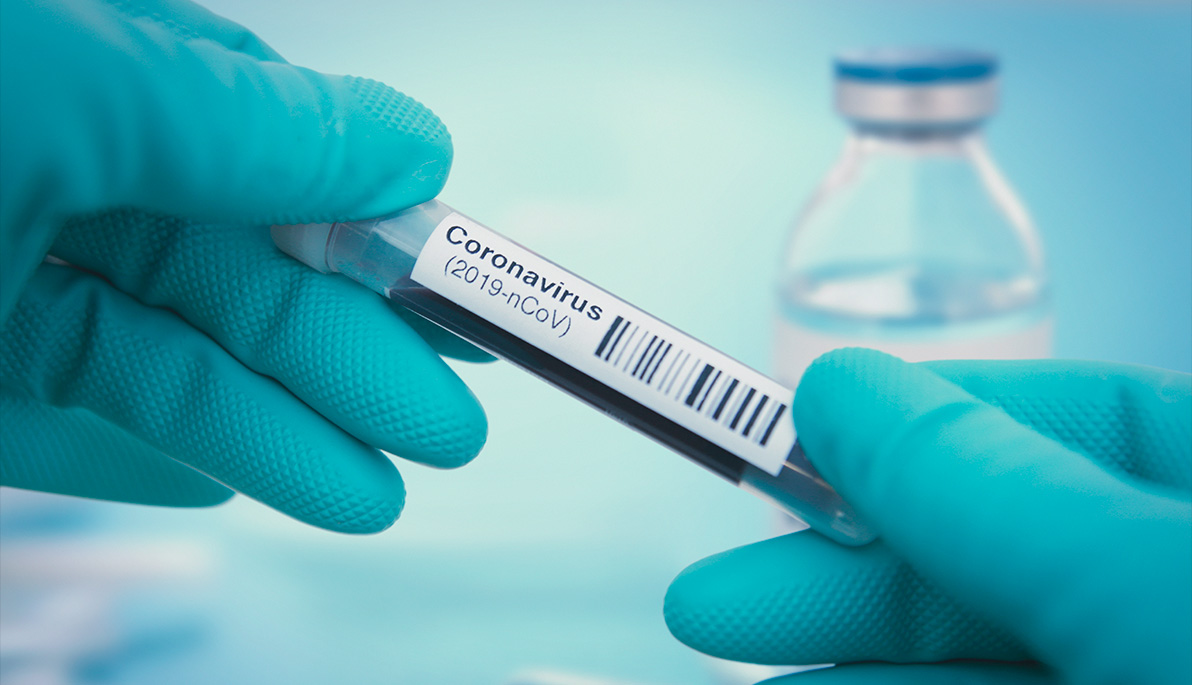News
SARS-CoV-2: What We Know and What Comes Next
March 10, 2020
As the headlines on COVID-19 (the novel coronavirus) change daily, scientists around the world are making heroic efforts to uncover the details of the virus at the molecular level.
This was the message that microbiology expert Bryan Gibb, Ph.D., assistant professor of biological and chemical sciences in NYIT College of Arts and Sciences, shared with New York Tech medical, health professions, and other students during a March 9 lecture for the Center for Global Health.
With the discovery of SARS-CoV-2 (Severe Acute Respiratory Syndrome-associated coronavirus), the virus responsible for COVID-19, there are now seven types of coronaviruses known to infect humans. The viruses are named for their crown of spike proteins, which take on different shapes in different viruses and bind to receptor proteins that act like a gateway into the cell.
Researchers have made global efforts to understand the virus’s microscopic features, which could explain its infectious nature and lead to the development of therapeutic drugs. So far, the genome sequence has revealed a binding site on the spike protein that is activated by furin, a host-cell enzyme found in many human tissues, including the lungs. Scientists believe that the furin may slice or “cleave” the spike protein, priming it to readily attach to the next host cell membrane.
Citing a Chinese study published in Nature, Gibb affirmed that SARS-CoV-2 most likely originated from a coronavirus found among bats. However, the virus was most likely not transmitted directly from bat to human.
“It’s almost certainly true that SARS-CoV-2 originated, at least in some form, from bats,” said Gibb. “However, it’s not likely that it jumped directly from bats to people. There likely has been some other intermediate host or hosts before it was able to readily infect humans.”
In the past two decades, coronaviruses have caused two significant pandemics: SARS and Middle East respiratory syndrome (MERS). However, compared to SARS and MERS, which so far have had case fatality rates of 10 percent and 40 percent respectively, COVID-19 seems to have a much lower mortality rate. Current data supports a 3.4 percent case fatality rate, or the proportion of fatalities among all individuals diagnosed, but Gibb believes this percentage to be an overestimate. Because most known COVID-19 cases are mild, health experts suspect there are many more infected people who have not been tested. These individuals may have mistaken the virus for a common cold or perhaps carried the virus but did not show any symptoms.
“It’s widely believed by epidemiology experts that this is an overestimate because we’re not seeing all the cases yet,” said Gibb. “A case fatality rate (CFR) is dependent upon people who have clinical cases. Since many may not show any symptoms they do not present as a case in the hospital and will not be counted or tested. This means that the total number of cases is certainly higher than what is reported, meaning the fatality rate is lower than the currently reported value.”
In the United States, there has not yet been enough testing capacity to detect mild cases, but if a large number of mild cases go uncounted, the CFR could appear artificially high. Gibb reassured attendees that as testing becomes more widely available, not only will it increase the number of overall known cases, it will also reduce the case fatality rate.
“We teach school children in the communities we serve during our global health experiences that hand-washing is a key component in preventing the spread of infectious disease, but research and knowledge on the cause and impact of disease is of vital importance as well,” said Lillian Niwagaba, Ph.D., director of the Center for Global Health. “These types of lectures, which provide an objective, scientific perspective, underscore the need for more physician-scientists, biologists, and health professions researchers who can contribute to solving today’s threats of global pandemics.”





